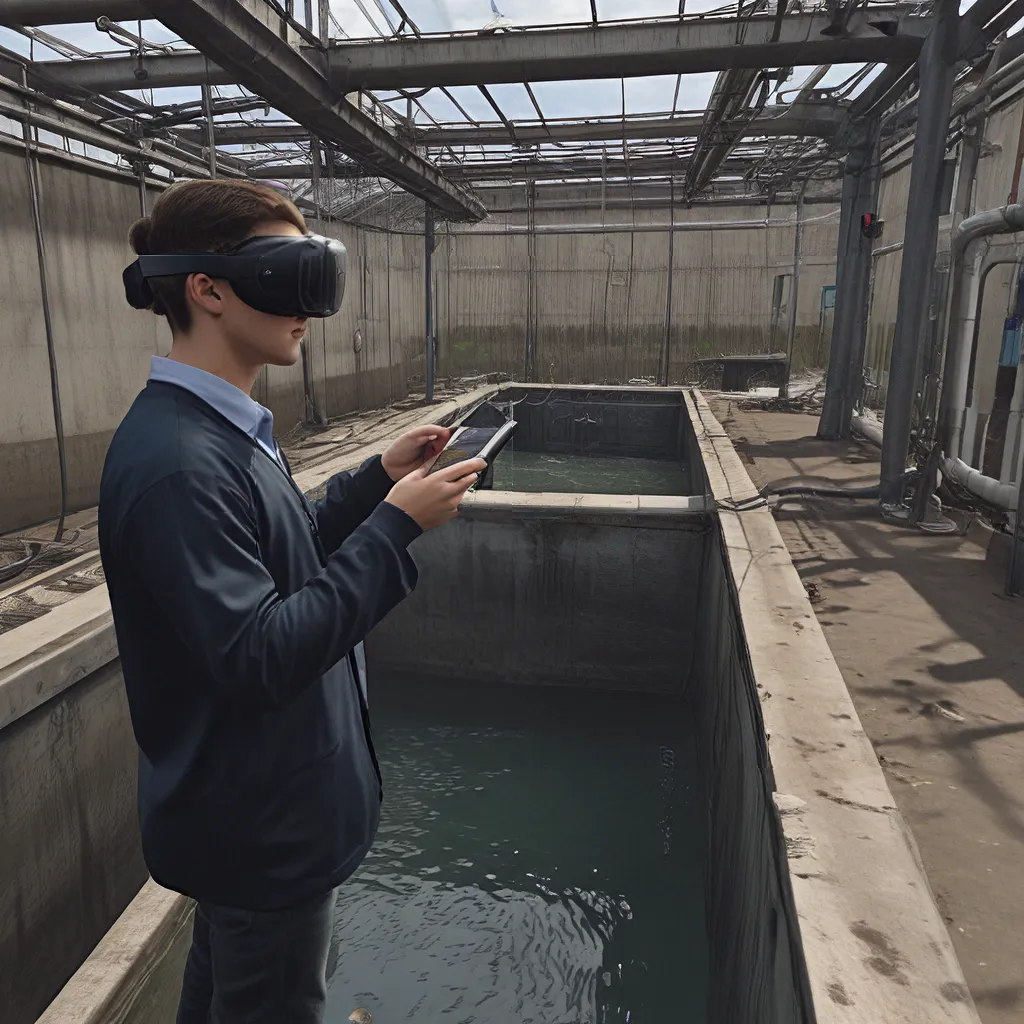
In the fast-paced, high-stakes world of wastewater treatment, having a well-trained and competent workforce is absolutely crucial. After all, these are the people tasked with ensuring our precious water resources are cleaned and returned to the environment safely. But as the industry faces a looming skills gap, with an estimated 25 million unfilled skilled jobs in the US alone over the next decade, finding innovative ways to prepare the next generation of operators has never been more important.
That’s where virtual reality (VR) comes in. Cutting-edge technologies like Emerson’s Mimic Field 3D are transforming the way we approach operator training, offering immersive, hands-on experiences that simply weren’t possible in the past. By allowing trainees to step into a fully simulated plant environment, they can gain invaluable practical knowledge and hone their decision-making skills without ever setting foot in a potentially hazardous real-world facility.
The Challenges of Traditional Operator Training
Historically, the process industry hasn’t exactly been at the forefront when it comes to operator training. Unlike other domains like mining, where interactive simulators have been widely adopted, the typical approach in wastewater treatment has been a combination of classroom instruction and on-the-job training (OJT) with an experienced mentor.
The problem with this traditional method is that it’s inherently risky. Exposing novice operators to the complex, high-stakes environment of an active treatment plant can lead to costly mistakes and potentially dangerous situations. And while OJT is an essential part of the learning process, it’s often difficult to replicate the full range of abnormal scenarios and emergency situations that operators may encounter.
As the experts at Honeywell note, “the introduction of complex control systems over the last 40 years has removed the hands-on nature of the operators’ role, which in the past provided the basis for much of training’s needs.” In other words, the shift towards automation and digital technologies has created a widening gap between classroom knowledge and real-world, practical experience.
The Rise of Simulation-Based Training
Enter the operator training simulator (OTS) – a game-changing tool that’s helping to bridge that gap. At the heart of an OTS are three key components: the simulation model (the digital representation of the actual industrial process), the information model (the control environment as experienced by the operator), and the training model (the educational tools and content).
As the research shows, these sophisticated simulators allow trainees to practice critical skills and respond to a wide range of scenarios in a safe, controlled environment. And by integrating the latest augmented reality (AR) and VR technologies, the training experience becomes even more immersive and effective.
The key advantage of simulation-based training is that it enables “dynamic practice” – the most effective way to develop knowledge and skills according to the learning pyramid. Instead of passively absorbing information through lectures or reading, trainees can actively engage with the virtual plant, make decisions, and experience the consequences – all without risking the safety of the real-world facility.
Enhancing Training with Virtual Reality
That’s where virtual reality really shines. By donning a VR headset, trainees can step into a fully immersive, 3D representation of a wastewater treatment plant, complete with realistic equipment, controls, and environmental cues. It’s the next-best-thing to being there, without any of the inherent risks.
Emerson’s Mimic Field 3D, for example, is designed to give new and incoming workers a deep understanding of how changes in the field impact the overall plant process. Trainees can practice proper procedures, make operational adjustments, and respond to emergencies – all in a safe, virtual environment.
This technology is a game-changer for the industry, as it allows operators to gain hands-on experience and make better decisions before ever setting foot in the actual plant. And with 66% of companies planning to adopt AR and VR technologies by 2022, it’s clear that virtual training is quickly becoming the norm.
Addressing the Talent Gap with Innovation
The impending skills gap in the wastewater treatment industry is a serious concern, with an estimated 25 million skilled jobs going unfilled in the US over the next decade. But as Jim Nyquist, group president of systems and solutions at Emerson, explains, “Our industry will become increasingly reliant on VR tools like these to address the growing skills gap and improve training effectiveness.”
By leveraging the power of digital twins, smart sensors, and cloud computing, companies can create highly immersive, accessible, and scalable training programs that prepare the next generation of operators. Not only does this enhance safety and operational performance, but it also helps to attract and retain top talent in a rapidly evolving industry.
The Future of Wastewater Training
As we look to the future, it’s clear that the integration of virtual reality, augmented reality, and other advanced technologies will be crucial for enhancing operator competence and addressing the industry’s talent challenges. By providing trainees with hands-on, immersive experiences in a safe, controlled environment, we can equip them with the knowledge and skills they need to succeed in the high-stakes world of wastewater treatment.
And at Alpha Wastewater Services, we’re at the forefront of this technological revolution. Our team of experts is dedicated to staying on the cutting edge of operator training, leveraging the latest VR and AR solutions to ensure our clients have a highly skilled, well-prepared workforce. So if you’re looking to take your wastewater treatment operations to the next level, be sure to reach out to us – we’re here to help you navigate the exciting future of this industry.